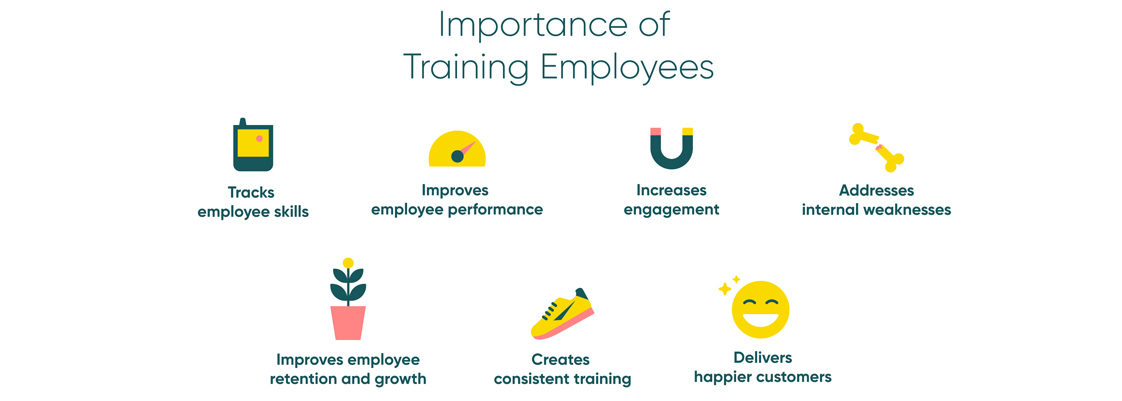
5 Tips to Improve Communication Within Your Remote Team
As we move towards a new way of working, an office-less culture is becoming much more normal. Which means chances are, you are going to have more of a remote team than before.
This is great for those homebodies amongst us. Yet, for others, it means saying goodbye to jokes by the water cooler and free cake on birthdays.
What’s more, in a physical office, communication may seem much easier. Meetings and discussions are far more instant. You only have to swivel 180 degrees to ask your colleague how the project is going.
But just because you won’t be in a physical space with your staff, it doesn’t mean that communication, and fun, have to go. A remote team still has an excellent amount of potential to be as strong as ever.
Home working may need a small amount of planning. But by following these tips, and perhaps also leveraging the benefits of virtual offices, remote teams can be efficient. As well as being as communicative, and sociable as the real thing.
Use Collaborative Software
It makes sense that employers take advantage of the great tech available. And luckily, there is a plethora of collaborative software out there. Making distance working and virtual communication so much easier.
Video chats, for example, allow users to screenshare their work. Sharing screens is perfect for presenting briefs to colleagues. It can also be used to run through agendas and show any potential works in progress.
Doing this creates an excellent environment for cooperation. Not all your team members have to be alone at home, either. You could get some of them together in coworking spaces, to create a productive mix of face-to-face and virtual collaboration. And although you are not all in the same room, you can work as though you are, thanks to collaborative software.

Trust your staff
Anyone who has ever worked for an untrusting boss knows it’s one of the worst feelings at work.
You have decided to work with remote staff for a reason. So, it’s important to trust that they know what they are doing, and they are professional.
It may be that you have hired them as remote workers, or that your whole company has gone remote in general. But presuming people are slacking off will not make for a progressive employee.
One solution is to introduce virtual team-building exercises from the get-go.
Doing this will ensure that people get to know each other. It will also show that as a good employer, you care about them as a person. Not only the work they produce.
Although, there may be times that you might have to check on people.
Using something like email tracking means that you can check on employees if needs be. You are not hovering over their shoulder, putting pressure on them. Yet, you are still able to check they are doing what they should be.
But having fun with and getting to know both management and employees will grow trust. It will also encourage people to want to do things for each other.
After all, if you get on with someone, you’re going to root for them. Which in the end results in higher quality work and higher levels of communication.
Examples of how to do some remote team building activities in an online meeting may involve a weekly Friday quiz with a drink or two. Or you can use video chat to adapt to a team lunch. If you’re feeling brave, you could even tell ghost stories around a tiny virtual campfire.

Invest in a good online office culture
Okay, so working remotely definitely has its benefits. There’s no more packed commuter trains, for one thing. You don’t have to put up with any more microwaved fish, either. And be honest, you can get away with waking up that bit later.
Yet, the best part about working in an office is also missing. And that’s being around some of the greatest people you know every day.
Online communication tools can keep up the banter levels - just don’t send a meme to the wrong group chat. Keeping up the conversations also means that your team spirit remains. It can also be useful to let people like human resources know teams are happy and are working well online. Some collaboration tools can even integrate with HR software.
Checking in at the start and end of the working day is another way of creating a good online culture. It ensures your team doesn’t start too late or finish past working hours. It also means that work and life don’t cross over too much.
Train everyone in the same tools
Not being in the same office means training can become a bit of a headache. But it’s nowhere near impossible.
Training all your staff to use the same tools keeps everyone up to speed in the tech department. And this can be the difference between average and great communication.
Organizing the use of new tools will also prove beneficial.
Remember that everyone has different learning speeds and experiences. It’s not fair to leave someone behind in tool training. It is an essential part of creating a great remote team.
For example, say someone shares something using a cloud-based digital asset management system. Their colleague, however, may not know the first thing about how to use it.
It makes sense to ensure everyone knows how to use and access vital information. Or problems will occur. And this should not be the case, especially when using such easy to use systems.
This creates an environment where people are getting work done quicker. As they are not having to pester someone for help. And everyone is upskilling along the way, something which is great for a company in general. It also creates a platform for equality, consistency, and value.

Establish good meeting etiquette
Like when meeting face-to-face, it’s important to have social etiquette online too.
A good place to start is by making sure each meeting has a facilitator. Having a middle person means that things can stay on track and everyone has a chance to be heard.
For example, when teleconferencing, go around the group who’re on a call and ask if anyone has any questions. This means that the usual suspects don’t take up all the speaking time. And it makes sure we hear and respect people.
Part of this means ensuring that everyone on the call has good meeting spaces. This means no loud music blaring out in the background. No “funny” posters as backdrop and not being sat in front of the window, creating a silhouette.
Having a good meeting space will give people the opportunity to talk and be taken seriously.
This applies to speaking with clients too. Whether talking on a video call, conference call, or even over SMS, it’s basic manners to have the right etiquette. Which will reflect how you appear as a company.
For example, say you are in a position where you are wondering how to find investors for a startup. The first thing you need to do is practice your best etiquette.
This creates a great first impression and demonstrates top communication skills. And this is one of the most important things when trying to get new people on board.
Although remote working may seem like a daunting thing, it really doesn’t have to be.
You can replicate a productive office environment from a home space and momentum can still be upheld. Using collaborative software and tool training will ensure great virtual communication. Whilst creating a culture of trust and etiquette ticks the social boxes.
Creating a great office culture online will ensure all the best parts of working in an office are fresh and fun.
Keeping all these things in mind will ensure happy staff and a happy work environment. Meaning taking work home won’t be such a bad thing after all.

Categories
- Business Marketing
- Business Resources
- Customer Success Stories
- Customer Success Stories: Communications
- Customer Success Stories: Meeting Rooms
- Customer Success Stories: Virtual Office
- Entrepreneur Tools
- Management
- Meeting Rooms
- Virtual News
- Virtual Office
- Virtual Receptionist Services
- Workplace Culture
Subscribe to Our Blog
Archive

- July 2025
- June 2025
- May 2025
- April 2025
- March 2025
- February 2025
- January 2025
- December 2024
- November 2024
- October 2024
- September 2024
- August 2024
- July 2024
- June 2024
- May 2024
- April 2024
- March 2024
- February 2024
- January 2024
- December 2023
- November 2023
- October 2023
- September 2023
- August 2023
- July 2023
- June 2023
- May 2023
- April 2023
- March 2023
- February 2023
- January 2023
- December 2022
- November 2022
- October 2022
- September 2022
- August 2022
- July 2022
- June 2022
- May 2022
- April 2022
- March 2022
- February 2022
- January 2022
- December 2021
- November 2021
- October 2021
- September 2021
- August 2021
- July 2021
- June 2021
- May 2021
- April 2021
- March 2021
- February 2021
- January 2021
- December 2020
- November 2020
- October 2020
- September 2020
- August 2020
- July 2020
- June 2020
- May 2020
- April 2020
- March 2020
- February 2020
- January 2020
- December 2019
- November 2019
- October 2019
- September 2019
- August 2019
- July 2019
- June 2019
- May 2019
- April 2019
- March 2019
- February 2019
- January 2019
- December 2018
- November 2018
- October 2018
- September 2018
- August 2018
- July 2018
- June 2018
- May 2018
- April 2018
- March 2018
- February 2018
- January 2018
- November 2017
- October 2017
- September 2017
- August 2017
- July 2017
- June 2017
- March 2017
- February 2017
- December 2016
- November 2016
- October 2016
- September 2016
- June 2016
- April 2016
- March 2016
- January 2016
- December 2015
- November 2015
- September 2015
- August 2015
- July 2015
- June 2015
- March 2015
- January 2015
- November 2014
- October 2014
- August 2014
- July 2014
- May 2014
- April 2014
- January 2014
- October 2013
- September 2013
- June 2013
- April 2013
- February 2013
- January 2013
- December 2012
- November 2012
- October 2012
- September 2012
- August 2012
- July 2012
- June 2012
- May 2012
- April 2012
- March 2012
- February 2012
- January 2012
- December 2011
- November 2011
- October 2011
- September 2011
- April 2011
- March 2011
- January 2011
- December 2010
- October 2010
- September 2010
- July 2010
- June 2010
- April 2010
- March 2010
- January 2010
Talk to an expert
Want to know more about our Virtual Offices? Give us a call
Get the Perfect Virtual Address Now
Find a Virtual OfficeServices
Virtual Offices Virtual Office Features What is a Virtual Office? Full Time Spaces Live Receptionist Live Receptionist Features Virtual Phone Number Meeting Spaces Meeting Space Features Coworking Spaces Event Spaces Marketplace Incorporation Services Search Virtual Office Services Near MeInstant Group
- © 2025 Davinci virtual office







